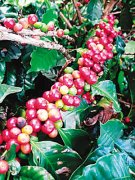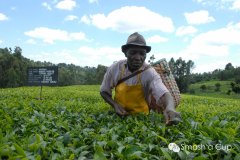What coffee do you recommend for East Timor coffee?
Before independence, East Timor already had a large number of small-scale coffee growers. After independence, the East Timor government vigorously supported coffee cultivation. Now a large number of small-scale coffee growers have formed cooperatives, which greatly improved the cultivation scale and quality of coffee in East Timor. East Timor coffee is unique as an island coffee. It lacks the rich floral flavor and bright acidity of island coffee. Instead, it has earthy sandalwood aroma and bean body rich in oil and viscous substances.
East Timor FTO Maubesse
Country of production: East Timor
Level: 1
Planting area: Maubesse
Label: Fairtrade and SKAL Organic Certified Cooperative
Processing method: wet processing
Appearance: 8d/300gr, 18SCR
Breed: Timer Varietal
Note: This fine coffee from East Timor is characterized by simplicity, outstanding balance, excellent viscosity and oil content as organic coffee, which is very suitable as a raw material for blending beans, light sandalwood aroma, overall flavor close to Java coffee.
Dry aroma (1-5): 3
Wet aroma (1-5): 3
Acidity (brightness)(1-10): 8
Taste (layering)(1-10): 8.4
Taste (body)(1-5): 4
Aftertaste (Residue)(1-10): 8.5
Balance (1-5): 0
Base Points (50):50
Total score (max. 100):84.9
Strength/Main Attributes: Light/Clean, Relaxing.
Recommended baking level: city+ or full city+
Comparison: Wet-processed Indonesian coffee with a flavor similar to Java coffee

Important Notice :
前街咖啡 FrontStreet Coffee has moved to new addredd:
FrontStreet Coffee Address: 315,Donghua East Road,GuangZhou
Tel:020 38364473
- Prev

Introduction of Sumatran boutique coffee producing areas
With its unique flavor, compact bean shape and low acidity, this rustic coffee is described as the famous Sumatran coffee. The unique wet processing method is the source of the unique flavor of Sumatran coffee. This processing method, known as Sumatras, gives Sumatran coffee earth-like flavor, with the aroma of trees and the smell of soil.
- Next

Puerto Rico has a very long history of coffee cultivation.
Puerto Rico has a very long history of coffee cultivation. As a Caribbean island country, coffee planting as a commodity began to rise here as early as the 1860s. What is interesting is that in recent years, with the increase of import tariffs on Puerto Rico coffee in the United States and other countries, although the coffee planting industry here has shrunk to a great extent, a new round of industrial reshuffle and integration
Related
- Beginners will see the "Coffee pull flower" guide!
- What is the difference between ice blog purified milk and ordinary milk coffee?
- Why is the Philippines the largest producer of crops in Liberia?
- For coffee extraction, should the fine powder be retained?
- How does extracted espresso fill pressed powder? How much strength does it take to press the powder?
- How to make jasmine cold extract coffee? Is the jasmine + latte good?
- Will this little toy really make the coffee taste better? How does Lily Drip affect coffee extraction?
- Will the action of slapping the filter cup also affect coffee extraction?
- What's the difference between powder-to-water ratio and powder-to-liquid ratio?
- What is the Ethiopian local species? What does it have to do with Heirloom native species?

